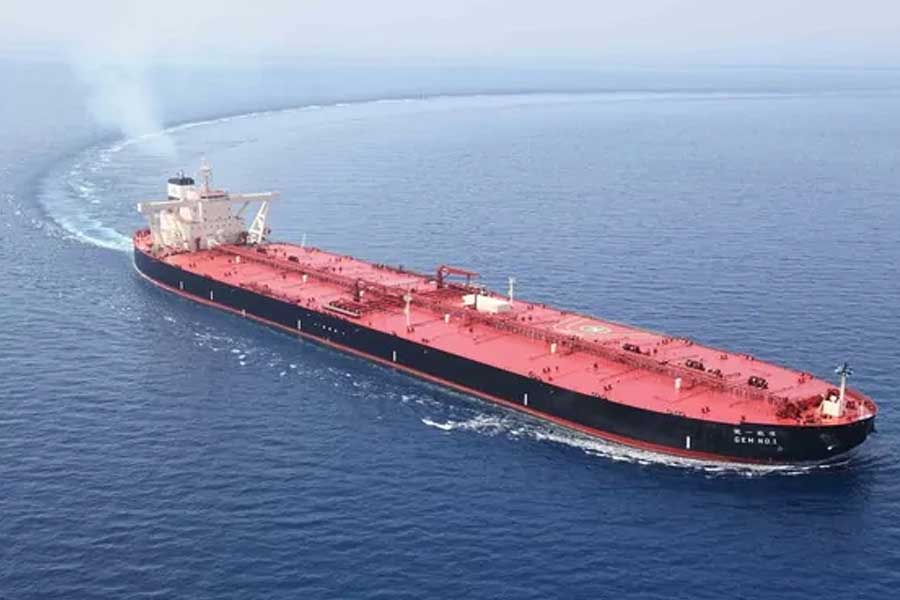It’s the mysterious Mumbai-based shipping company that grew to be one of the largest in the world in less than a year.
Now, just as suddenly as it became a global force on the shipping scene, Gatik Ship Management is slashing its fleet. It has sold or otherwise disposed of at least 20 ships in the last few weeks. It’s now reckoned to have about 32 ships carrying crude oil on the high seas. However, other industry sources reckon up to about 30 ships have already been sold or attached to other companies.
At its peak Gatik had a monster-sized fleet of between 52 and 58 ships that had all been bought in the slightly over one-year period since the company had been formed. It had emerged this year as a leading carrier of Russian oil to India. One shipping industry online publication reckoned that Gatik had splurged a massive $1.6 billion on acquiring the fleet. This propelled Gatik to the spot of the 10th largest company in the tanker shipping world.
Why the sudden shift into marine reverse gear? While the shipping company is not commenting, one of major reasons could be that it’s getting tougher for Gatik’s vessels to obtain insurance covering physical damage, environmental damage, injury and other hazards.
Too huge, too quick
Gatik, in its short life, appears to have grown too huge and attracted too much publicity. In Gatik’s case, the old adage that all publicity is good publicity was definitely not true. Most alarmingly for its secretive owners, London’s Financial Times did an in-depth probe that attempted to rip aside the corporate veil and reveal the company’s true proprietors.
The FT concluded that the most likely key backer was leading Russian oil producer Rosneft. It suggested that the Moscow-based oil behemoth had built up Gatik so that the company could put its vessels on the India-Russia oil run that has burgeoned since the start of the Russia-Ukraine war.
Lloyds Register also told Gatik that it’s withdrawing certification of 21 of its vessels, according to Reuters. A major US insurer, the American Club, is no longer supplying cover for Gatik vessels as well. Neither insurer gave any reason for the decision to drop Gatik from coverage. But Lloyds said it’s “committed to facilitating compliance with sanctions regulations on the trading of Russian oil."
Price cap per barrel
To punish Moscow for its invasion of Ukraine, Western powers have imposed a $60-a-barrel price cap on Russian crude at the port of loading. While non-EU nations like India can import Russian crude, insurers and Western shipowners are banned from handling such loads unless they’re sold at or below the price cap.
Gatik is thought to be one of the largest of around 900 new shipping firms launched in the last year which are thought to have Russian links. Many are registered or have links with the UAE, where huge crude oil deals also take place.
Other new maritime businesses have been established in places like Turkey and Singapore, according to S&P Global.
Links to Russian entities
Adds S&P Global: “These primarily tanker owners have created fleets of vessels with direct and indirect links to Russian entities while retaining a general level of opaque ownership information, especially in regard to the ultimate group owner.”
It added: “In the meantime, these new owners have helped Russian oil continue to flow when more traditional and conventional fleet owners exited the Russian market.”
Energy-hungry India’s huge appetite for Russian oil has, in the last year, also put new pressure on the oil tanker business. Suddenly an entire fleet of tankers had to be conjured up to make the long 30-to 35-day journey from Russia to Indian ports in Gujarat, Kochi and even Vishakapatnam. India, which imports 85 per cent of its crude needs, had always bought its oil from the nearby Gulf countries like Saudi Arabia, Iraq and Kuwait. It’s a five-day journey from the Gulf countries to India.
Number of ships climbed sharply
The number of ships in Gatik’s fleet climbed sharply as India stepped up its buying of Russian oil. India, which had been getting about 1 per cent of its imported crude from Russia before February 2022 when the Russia-Ukraine war started, steadily stepped up its buying through the year. In April 2023, it received almost 50 per cent of its imported crude from Russia.
Russia's oil exports in April climbed by volume from a year ago but its revenues have fallen by 27 per cent, the International Energy Agency calculates. The Indian government, which has remained neutral in the conflict, says it has to source oil from the cheapest source in the national interest. India gets roughly a $10 discount on the price of Russian crude.
India’s imports from Russia are likely to slow down in the coming months because domestic demand drops considerably when the monsoon storm clouds arrive. This, however, will give Indian refineries a chance to catch up with maintenance work which has not been happening because they were working at full tilt.












